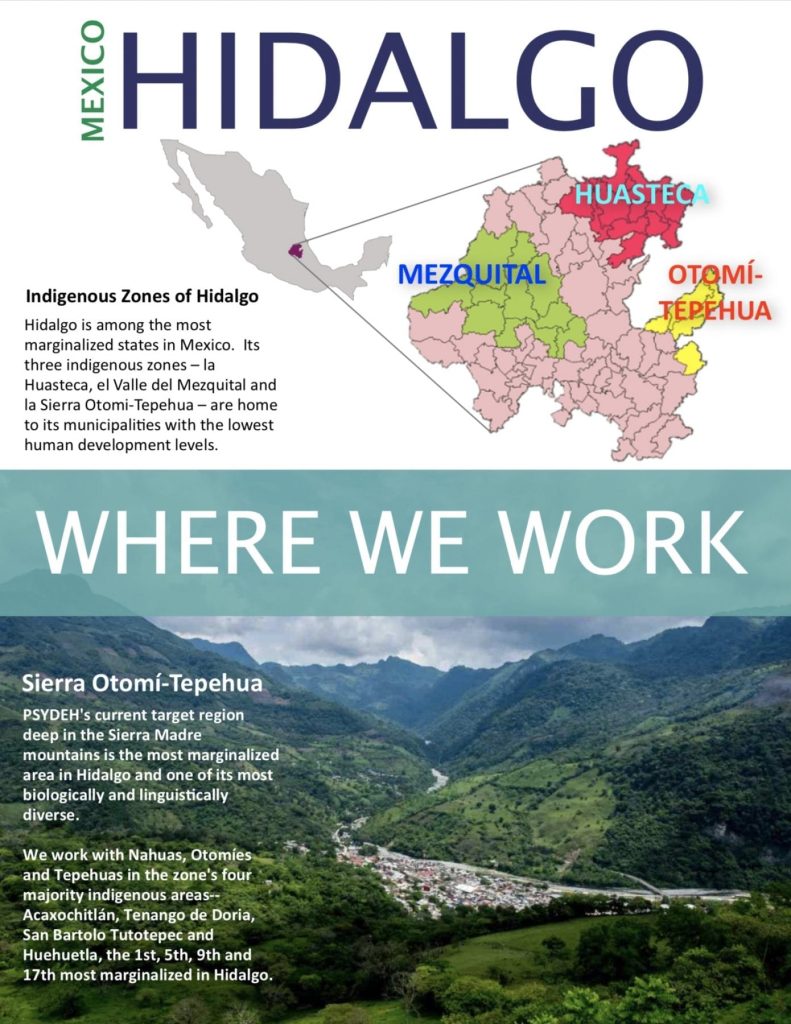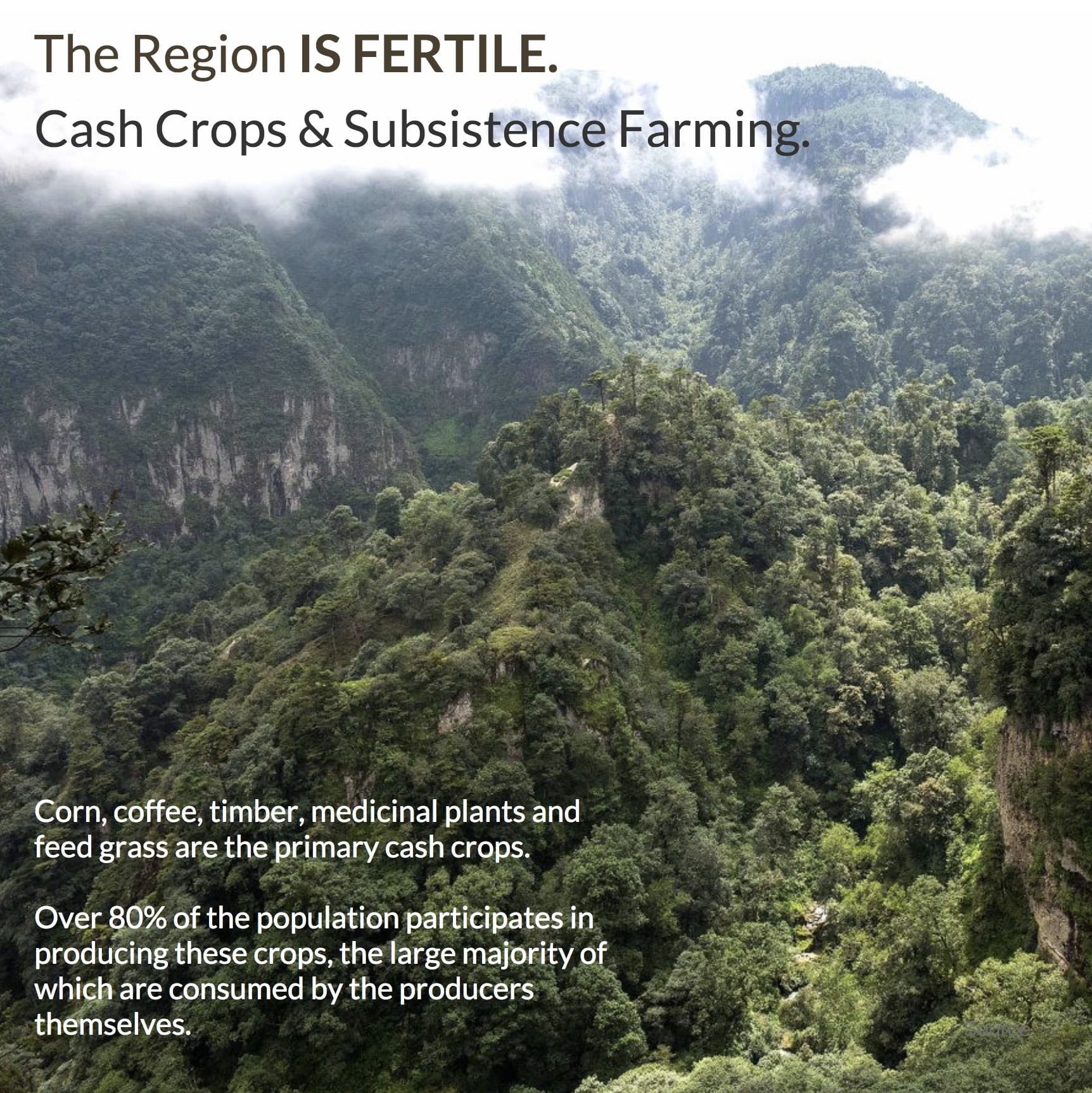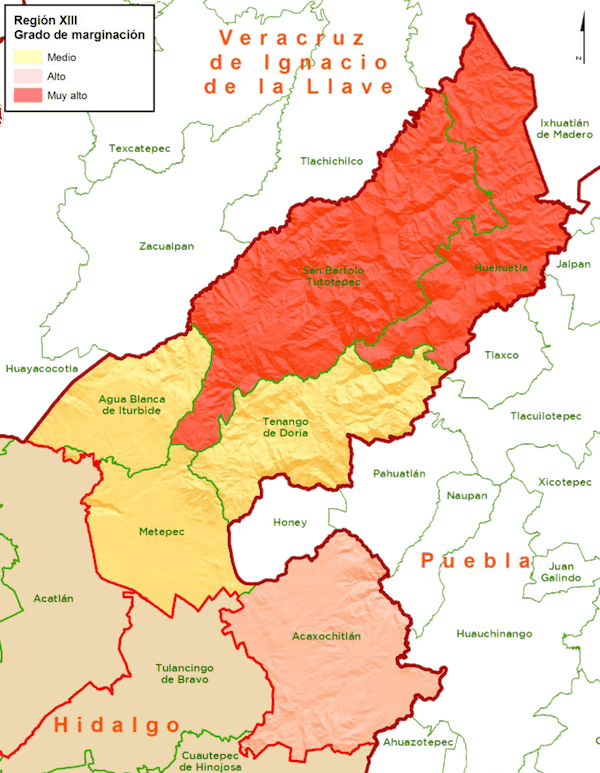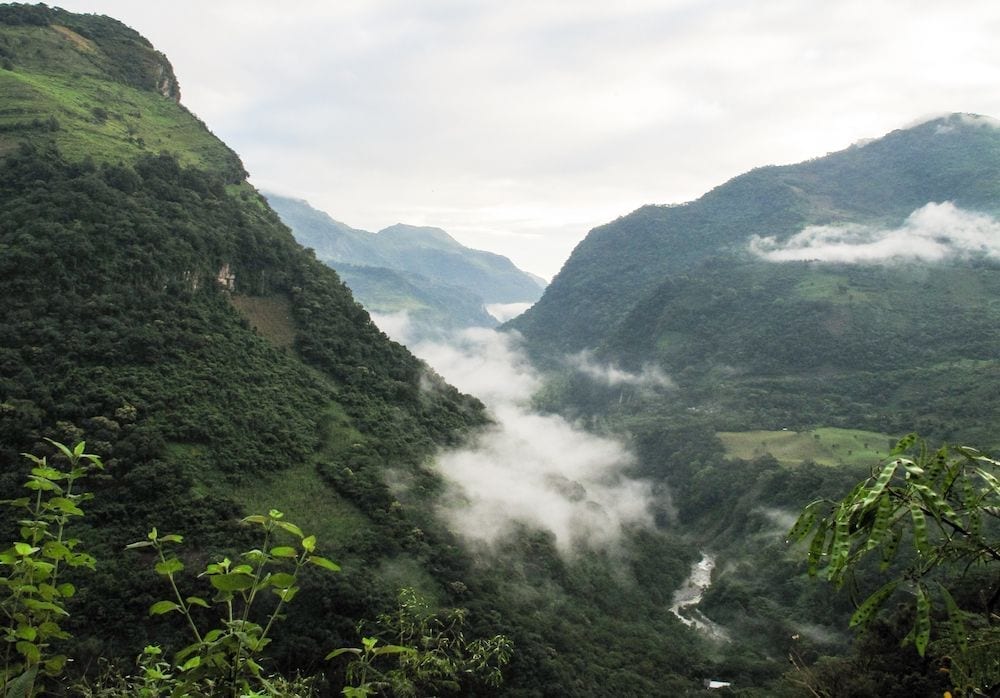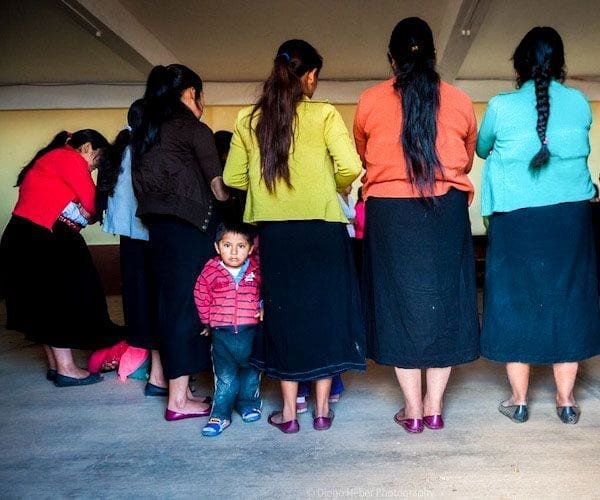Even if Mexico reflects a strong case of successful nation-building, eg., its GDP is the second largest in Latin America, it is facing growing poverty and wage inequality.
Almost half of its population, or 61 million people, live in poverty and nearly four of five Mexican municipalities were measured at development levels lower than the Latin American average.
The wealth and wage gap between the rich and poor is larger in Mexico than in any other OECD member country, this despite Mexican workers laboring more hours than workers in other OECD countries.
The State of Hidalgo, in central Mexico, is no exception to this reality.
- In 2012, nearly 53% of its population lived at or below the poverty line.
- It is one of eight states in the Republic in which no discernible progress had been made in lowering poverty and extreme poverty through 2014.
- According to the UNDP, Hidalgo is the 6th most marginalized state in Mexico; 15% of its municipalities have a “low” level of human development (similar to that of Liberia in Africa). The majority of these are in the three indigenous zones of the State: La Huasteca, El Valle de Mezquital, and La Sierra Otomi-Tepehua.
In eastern Hidalgo, the Sierra Otomí-Tepehua region (Region) sits in the southern range of the Sierra Madre mountains north of the Valley of Tulancingo and a stone’s throw from the states of Veracruz and Puebla.
Here, roughly 120,000 citizens (51% women, 49% men) live in 473 communities divided among six municipalities. Four are majority indigenous with a total population of 99,489 citizens, 60,000 of whom speak Nahautl, Otomí or Tepehua.
Reliable economic data are hard to find. What we know is that there is no industry. Eco-tourism attractions are plentiful, but the Region has little infrastructure to attract and support any sizable tourism trade.
Up to 86% of the population earns the rural poverty threshold of $1,610 pesos (or $80USD) per month or less. This causes heavy migration by the Region’s citizens to urban Mexico and especially the USA; most women partners report at least one family member has migrated north without legal papers.
In Tenango de Doria, Huehuetla and San Bartolo Tutotepec, internationally renowned artisanal embroidery, coffee and timber production drive what commerce exists. Whereas Acaxochitlán is a regional distribution center for flowers and produces ornamental plants, apple, timber, and artisanal wool and embroidery.
Three regional sociocultural and political realities impede human and communal development:
- High marginalization, with its four majority indigenous municipalities being the 1st, 3rd, 9th and 22nd most marginalized municipalities in the state.
- Weak citizen participation and civil society and ineffective government.
- Gender inequality and subsistence economies.
Underlying forces driving these problems include:
- Corrupt politics and ineffectual federal aid; government funders rarely visit the communities in which their programs are produced.
- Low education levels.
- Little apolitical citizen leader training; women leaders are neither supported nor empowered to succeed.
- Organizations like PSYDEH face inadequate funding and training, in part because of the short government funding cycle and government agencies’ resistance to collaborating with one another. NGOs are thus only able to hire staff for 3-6 month terms, organizational leadership suffers through long periods without salaries and forward-thinking planning is non-existent, harming professionalism and creating mistrust between citizens and NGOs.
The Region wrestles with environmental degradation due to increased ranching, deforestation from poorly planned and illegal logging and poor government coordination. Despite solid annual precipitation, people struggle to access water. With indiscriminate water drilling and poor water distribution, many women have to walk up to six hours for fresh water.
To combat this reality, PYSDEH develops new and strengthens existing civil-society mechanisms for local sharing of new technology like rainwater capture systems, unites the Region’s indigenous leaders, and uses informed citizen demands to hold private and public actors accountable on such issues as illegal logging and smart reforestation.
Climate-related stresses like intensifying rain-and hailstorms make life in the already harsh Region more challenging.
PSYDEH and women partners decrease communal vulnerability when mitigating the impacts of the change by (1) using the women’s NGOs as a liaison for smart distribution of basic technology like clean-burning stoves and rainwater capture systems or reforestation, and (2) supporting women leaders in educating themselves to make informed demands that government is forward thinking when regional resilience planning.
Ineffective government and the Region’s remote location obstruct modern communication and the exchange of information and ideas. Women thus combat deprivations of knowledge, nutrition and health, property ownership (especially land and housing) and time. The birth rate is 3.3 children per woman. Like Chiapas and other rural regions in Mexico, expectant mothers face excessive health risks when giving birth. Moreover:
- The female average achieved grade level is 3.9. +30% of women are illiterate. And husbands prohibit women from joining and continuing work with PSYDEH.
- Daily home-to-school transportation costs are $40 MX. This is $200 per week, $800 per month, which is roughly ½ of the $1,615 monthly rural income poverty threshold at which up to 86% of people live.
- 0.01% of homes report having a computer, and 100% of homes report having sporadic access to electricity and limited access to the Internet.
[kkstarratings]

